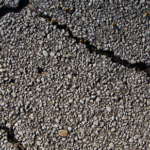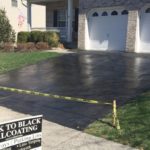What Is Asphalt Fatigue Cracking?
 Fatigue means exhaustion and this normally happens when doing something repeatedly over the time. This is also can happen for asphalt and this can be seen it starts to break down and it may lead to the cracks development.
Fatigue means exhaustion and this normally happens when doing something repeatedly over the time. This is also can happen for asphalt and this can be seen it starts to break down and it may lead to the cracks development.
This asphalt fatigue is normally occurring on the repeated traffic loading, then it eventually leads to the development of interconnected cracks known as fatigue cracking in the pavement. Fatigue cracks originate as a minor issue. If repairs are not made in a timely fashion, this can turn into greater and more costly problems.
Fatigue Cracking
The most severe fatigue pavement cracks result in structural failure, as the cracks allow water to get inside and cause further damage. Resulting in rough patches of pavement with the potential to form into larger potholes.
The asphalt fatigue cracking is an indicator of structural failure, cracks allow moisture infiltration, roughness, may further deteriorate to a pothole.
The possible cause of asphalt fatigue isinadequate structural support, which can be caused by a myriad of things. The most common causes are as follows.
- Decrease in pavement load supporting characteristics, this includes loss of base, subbase or subgrade support (e.g., poor drainage or spring thaw resulting in a less stiff base) as well as stripping on the bottom of the HMA layer (the stripped portion contributes little to pavement strength so the effective HMA thickness decreases)
- Increase in loading (e.g., more or heavier loads than anticipated in design)
- Inadequate structural design
- Poor construction (e.g., inadequate compaction)
It is worth to note that there are three factors must be present in order for fatigue cracks to form. Firstly, the surface is continually put under more weight than it was built to withstand or is consistently used at peak loading capacity. In addition to that, peak stress levels are high. Last but not least, the stress continues over a relatively long period of time.
Other factors that contribute to the development of fatigue cracks includestress concentration,corrosion, overload, temperature,residual stress and metallurgical structure.
In order to repair it,a fatigue cracked pavement should be investigated to determine the root cause of failure. Any investigation should take place and it involves digging a pit or coring the pavement to determine the pavement’s structural makeup as well as determining whether or not subsurface moisture is a contributing factor. The reason for the investigation is because once the characteristic alligator pattern is apparent, repair by crack sealing is generally ineffective.
Fatigue crack repair generally falls into one of two categories:
- Small, localized fatigue cracking indicative of a loss of subgrade support. Remove the cracked pavement area then dig out and replace the area of poor subgrade and improve the drainage of that area if necessary. Patch over the repaired subgrade.
- Large fatigue cracked areas indicative of general structural failure. Place an HMA overlay over the entire pavement surface. This overlay must be strong enough structurally to carry the anticipated loading because the underlying fatigue cracked pavement most likely contributes little or no strength.
Contact us
 Phone Call |
 Text Message |
 |







